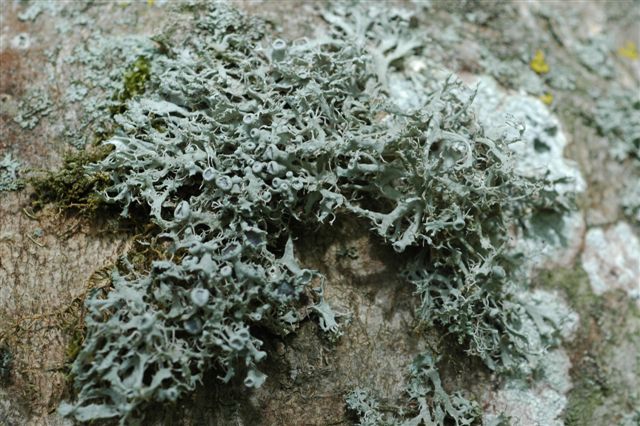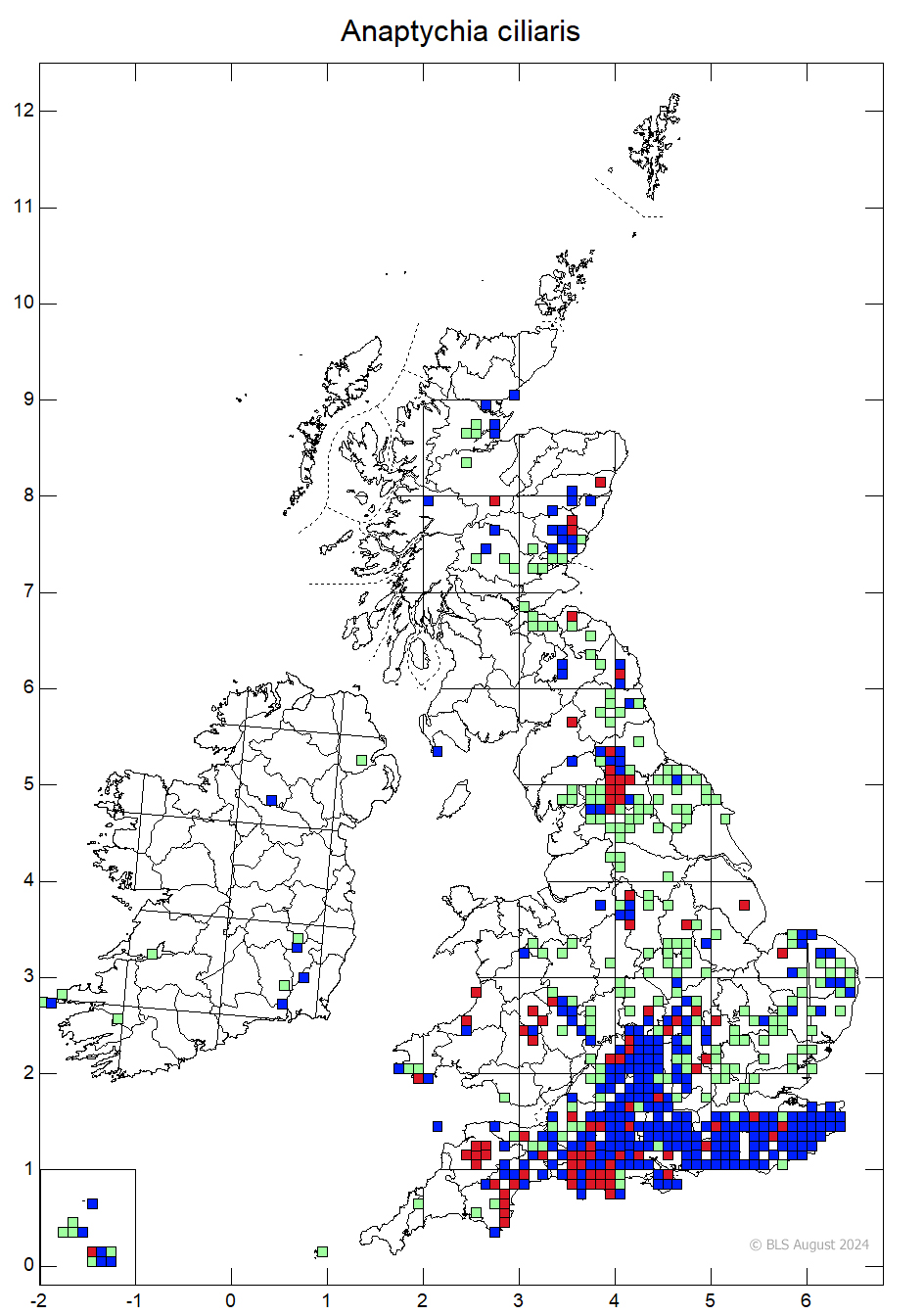Anaptychia ciliaris
A large foliose lichen found on well-lit and nutrient enriched tree trunks. The thallus is grey with long, much branched, narrow lobes which widen and become brown at their tips. The upper surface has a "furry" or velvety appearance whilst the lower is white and lacks a lower cortex (the hyphae form a loose mat). Cilia on the margins of the lobes are often pale and curved, giving the lobe tip the appearance of eagle's claws.
Apothecia are common in unpolluted areas, with black, frequently pruinose discs and borne on short stalks.
Thallus 3-5 (-10) cm diam., ± strap-shaped, loosely attached; lobes elongate, to 3-5 cm long, irregularly branched, ± spreading horizontally with ascending apices and numerous conspicuous, pale, entangled cilia along their margins. Upper surface ± finely tomentose. Lower surface pale brownish white, without rhizines or lower cortex.
Apothecia occasional, 2-5 mm diam.; disc brown-black, often blue-grey pruinose; thalline exciple smooth, even to conspicuously deeply crenulate.
Chemical Reactions: All negative.
May be confused with Anaptychia mamillata, which occurs on maritime rocks, and with species of Heterodermia.
Predominantly on the bark of nutrient-rich, well-lit, mature, broad-leaved trees particularly Acer and Fraxinus, and formerly Ulmus, in parklands, pastures and along roadsides; rarely on rocks, stone walls, and tombstones. It usually occurs on the trunks of mature trees, well above ground level. Other trees include Tilia and Quercus, especially in pasture where there is some nutrient enrichment.
In Britain it is usually found in the Physcietum adscenditis association of the Xanthorion, often with Physcia aipolia, Physconia distorta, Parmelia acetabulum and Xanthoria parietina. In southern Europe it also occurs in the Lobarion.

Formerly widespread and locally frequent throughout England, from Devon north into eastern Scotland, but now scattered with the main centre of population in the Dorset-Cotswolds area. Very rare in Wales, western Scotland and Ireland.
It is rare in oceanic regions but widespread and still locally common in the less polluted areas of central and southern Europe (where it is often fertile), to southern Scandinavia and east to Turkey. Very rare in Macronesia, Asia and Africa.
Native, declining.
Formerly widespread in pasture and on roadside trees, it decreased in many areas during the 20th century due to Dutch Elm Disease, SO2 pollution and the use of inorganic fertilisers. Particulate inorganic fertilisers may get trapped in the tomentum of the upper surface where they induce algal growth which then kills the lichen. Not thought to be particularly sensitive to NOX or NH4.
It is still declining in many areas and is now largely extinct as an epiphyte in Scotland and N.E. England. The main population now is from Dorset to the Cotswolds where relict populations persist in ol pastures and parklands.
Rose, F. (1998) Anaptychia ciliaris ssp. ciliaris. Species account 45/1998 in the third fascicle of the Lichen Atlas of the British Isles. British Lichen Society, London.

